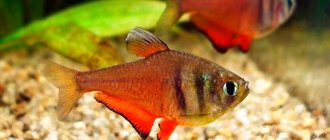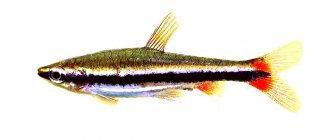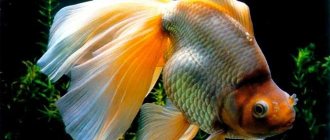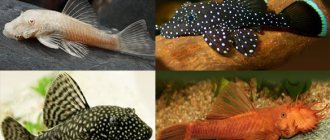In this article we will talk about probably the most popular endemic of Lake Malawi from the Mbuna group - Labidochromis Yellow! Swahili terms "Mbuna" - literally "dweller of the rocks". And “Utaka” means “life in open water.” Swahili is one of the official languages of Malawi, Tanzania and Kenya (on whose territory Lake Malawi is located).
It is worth noting that there are quite a lot of color variations of Labidochromis: from white to blue, but it is this yellow color that aquarists love most. These fish have earned popular love not only for their bright colors, but also for their unpretentious keeping, resistance to diseases, interesting behavior and absolutely unproblematic breeding.
Let's take a closer look at these amazing fish.
Latin name: Labidochromis caeruleus "yellow";
Russian name: Labidochromis yellow;
Synonyms: Yellow, labidochromis yellow, golden, yellow, labidochromis yellow, labidochromis lemon, labidochromis hummingbird;
Habitat: Africa, lake endemics. Malawi, Mbuna group. They live in the waters of the western coast of the lake along rocky, coastal coastlines, at a depth of 10-50 meters - in shallow water. Despite its wide distribution in the lake, wild specimens of labidochromis are very rarely found with a yellow color. Yellow forms of fish are found only in the northern part of the lake, between Lev and Charo bays.
How long does Labidochromis yellow live: 7-8 years, see how long other fish live - here .
Compatibility Labidochromis yellow
All Malawian cichlids are aggressive to one degree or another. But the entire Mbuna group - despite the fact that they are predominantly herbivores - are more aggressive. All “mbuna” live in shallow water - and their “personal territories” are relatively small and clearly visible. That’s why “mbuna” are extremely territorial. And the “Utaka” group, although predominantly predators, live at great depths among rocks and have large personal territories in which opponents are very difficult to see. And therefore, in general, they are more peaceful towards their own kind and less territorial. But the problem is that according to scientific calculations, all types of Malawian cichlids are descendants of ONE ancient species! The formation of new species occurs in our time - but genetically all Malawians are very close to each other. And they do not always distinguish individuals of their own species and randomly interbreed naturally in the most unimaginable variations. Therefore, they are either kept in species aquariums, or bred only at “landing” in spawning grounds - when the owner selects the producers himself, excluding spontaneous spawnings in a common aquarium.
Highly recommended viewing
These yellow cichlids are often called the most peaceful, dwarf cichlids in Africa. Well, one can agree with this opinion; labidochromis really get along well with their own kind. We can say that they are even slightly timid - they hide like mice in holes when there are sudden movements or knocking near the aquarium. However, do not forget about the burrow of any cichlid. They should absolutely not be kept with any goldfish, characin fish, labyrinth fish, or viviparous fish. Firstly, this is unnatural - the fish are from different habitats, secondly, the conditions of detention and water parameters vary and thirdly, labidochromis will show aggression towards the more peaceful inhabitants of the aquarium, especially during the spawning period.
Good neighbors for yellow labidochromis will be the same “calm” cichlids, for example, pseudotropheus and blue dolphins. Catfish-like fish (of the armored and loricariid families) get along well with elow - thoracatums, ancistrus, L-catfish .
Diseases
In general, the fish are quite strong and do not suffer from frequent diseases. At the same time, if they eat improperly, they may develop bloating and obesity. Also, if fish are kept improperly, they can easily become poisoned or become infected with infectious diseases. To prevent health problems, you should follow a number of simple preventive rules, the main ones of which are:
- complete, varied feeding in small portions;
- keeping only species that suit the fish in size and temperament;
- ensuring comfortable conditions for fish in the aquarium;
- do not use chemicals for cleaning the aquarium and its equipment;
- carrying out quarantine measures before introducing new fish into the aquarium.
Most often, diseases in aquarium fish appear for the reason that a new fish, snail or plant, before moving into a home pond, was not previously kept in quarantine for 2 weeks, and it brought the disease into the general aquarium . This is a common mistake for beginner aquarists.
Labidochromis yellow can be kept even by not the most experienced aquarists.
Yellow cichlids are beautiful aquarium inhabitants and are deservedly considered one of the easiest cichlid species to keep. Strong and unpretentious fish will delight their owner not only with their appearance and behavior, but also with regular reproduction. The care and maintenance of these cichlids is very simple.
Description of labidochromis yellow
Fish in nature reach 10 cm in length, in an aquarium they can grow up to 8 cm. The body is dense, elongated, and juicy yellow in color. A black stripe runs along the upper edge of the dorsal fin and along the lower edge of the anal fin, which develops in adult fish and is brightest in males. Males and females do not differ in color. But the dominant male can be easily identified by the intense yellow color of the body, as well as the black ventral and anal fins, which sharply contrast with the general color. The black dorsal fin has a yellow rim. This stripe in adults continues into a black mask and can extend to the stomach. Brown spots appear between the eyes and near the mouth of males.
The color of the ventral and anal fins of females is usually yellow.
Reviews
I really like yellow ones, although I would argue with their livability. They are still comrades, they even tortured barbs. Several times the large yellow ones ate the purchased small ones and they constantly fight with the parrots. Igor
I created a pseudo sea in the aquarium, hummingbirds are a godsend for this. Labidochromis yellow likes shelter, so I have sand grottoes installed that imitate a reef. There are also real corals and shells. Looks cool! Mila
Labidochromis easily gets along with non-aggressive species of cichlids, and in my case with angelfish and ramiresi. Natalia
Conditions for keeping Labidochromis yellow
The mini-nanomal volume of the aquarium should be from 100 liters. In such an aquarium you can put 2-3 females and one male. It is worth noting that such aquarium volumes are very, very small; you will see all the charm and playfulness of these fish only in an aquarium of 200-300 liters. In such volumes you can keep a whole flock of yellows, you can clearly see their hierarchy, habits and courtship!
There is often an opinion that Vallisnenria , supposedly it is beautiful and serves as an additional diet for the fish. But let me disagree with this! Firstly, Vallisneria is American, it is more suitable for decorating aquariums with South American cichlids (angelfish, discus). Secondly, the gastronomic preferences of yellow simply will not allow Vallisneria to grow and expand, no matter how much you plant it, even if you make thickets, in a month, these two yellow imps will mow everything down to the very root.
You can also use coconut shells as an alternative decoration.
If you are just about to build your first Malawian cichlid - Just do it and know that it is simple to the point of disgrace. After all, the biotope of these fish can be called a stone desert, which actually needs to be reproduced in an aquarium. Sand or fine soil, rubble of stones - the cichlid is ready. There is no need to rack your brains over aquarium lighting, there are no problems with plants, all you need is high-quality filtration and aeration. In fact, the only thing an aquarist should do is timely water changes and monitoring the concentration of nitrates and phosphates.
Moreover, we note that African cichlids are alkaline, hard-water fish. Such water flows from the tap in most regions of our country. Thus, we do not particularly need to monitor and reduce the pH and kH of the aquarium water. On the contrary, you can easily use any stones containing limestone and marble. Sizzling in vinegar !? So that's great! Cichls will appreciate this.
Well, if some of you want to see more than just a stone desert in your cichlid fish, you’d like to add plant colors. No questions asked - use plastic aquarium plants , for example, often in pet stores, you can surprise plants from the Laguna company , which are perfect for decorating an aquarium with African cichlids.
The problem here is that Malawian cichlids are not really predators. They are herbivores. In Lake Malawi, they chew rocks with their mouths, collecting algal fouling. Therefore, keeping live plants in cichlids is problematic; cichlids slowly but surely hamster them. The only option we can recommend is planting hard-leaved and oak plants, such as large anubias , cryptocorynes , crinums and similar plants. And then, keep in mind that Malawians can even gnaw anubias.
Taking into account such gastronomic preferences, it is also worth noting that the diet of African cichlids should primarily consist of plant ingredients. You can feed them protein foods as treats. But the main base should be food such as, for example, Tetra Malawi Flakes , which contains a balanced mixture of algae: spirulina, nori and chlorella.
It should be noted that when purchasing any dry food, you should pay attention to the date of its manufacture and shelf life, try not to buy food in bulk, and also store the food in a closed state - this will help to avoid the development of pathogenic flora in it.
History of the species:
The species was first described in 1956 by Geoffrey Fryer during his stay at a fishing station in one of the bays. The name caeruleus means “blue” in English, and reflects the color characteristics of the first discovered species. Blue specimens of Labidochromis live between Undu Reef and Cape Tumbi. Yellow specimens are just one of the many morphological forms of Labidochromis (there are more than 12 of them) living in this lake. Blue forms also live here, and the species got its name in honor of the latter. Yellow labidochromis is a geographical variant of the species, and its distribution on both sides of the lake is much wider. Individuals of yellow color are absent from all fish populations in the area between Charo and Kajizingi. Representatives of the species living along the northern coast of Nkhata Bay are pure white in color. Lion Bay, located 15 miles from Nkhata Bay, is very narrow and deep, and has become home to two populations of labidochromia. Along the northern part of the bay, the yellow color of individuals of the species is more pronounced than that of representatives of the species living along its southern coast. Representatives of the second population have a yellow upper body and a white belly. South of Kajizinga only all-white individuals are found.
In the late seventies and early eighties there were three exporters in Malawi: Stuart Grant, Eric Flota and Norman Edwards. It was Edwards who was able to obtain 2 live individuals from the country in 1980 - a male and a female. They were part of a transported cargo destined for Swedish importer Stig Jansson from Stockholm. Pierre Brichard was the first person to recognize the commercial potential of these fish. Jansson gave up a couple of fish, and Brichard was able to establish the process of fish reproduction. Once the number of offspring of these two individuals exceeded 1000 (this happened in 1986), he began to sell yellow individuals under the name "Tanganyika Labidochromis".
He didn't show his offspring to anyone until 1986, and that's when Stuart Grant first saw these yellow specimens. Based on the peculiarities of the delivery process, he decided that the individuals would not be viable after the postponed move. A few years later, in 1990, he began breeding these fish in his fish farm at Cape Kambiri. Unfortunately, during the earthquake, all the ponds along with the fish were practically destroyed. Grant decided to stop breeding fish, and he sent the specimens that survived the earthquake to his colleague Gary Kratokhval in the USA for research. In the period from 1980 to 1990, the export of fish was stopped, so all the resulting individuals were the result of the hobby of breeding the first pair of fish that Brichard was engaged in. This color variant is much less common in natural conditions, and such large-scale breeding of yellow individuals has led to the fact that their number is many times higher than wild forms (hundreds of times).
Breeding and propagation of Labidochromis yellow
This question does not present any difficulty. We can say that labidochromis reproduce independently - under optimal conditions, spawning occurs frequently and in a general aquarium. At the same time, even if you didn’t plan to breed yellow ones, didn’t put any effort into it, they will breed on their own... even with aggressive neighbors... a couple of fry will survive from time to time.
This amazing vitality is due to the intelligence of these fish and the evolutionary habits that they have developed over thousands of years. We recommend that you definitely watch the Animal Planet film “African Cichlids ,” which makes the viewer look at their pets differently.
Feeding
The store has a large number of specialized food for cichlids, for example, Tetra Cichlid Color.
Fish are omnivores and eat everything they can swallow. Because of this, it is important to monitor how much food is given and avoid overfeeding. If you overfeed your pets, there is a high risk of bloating, which most often leads to the death of the fish. The daily portion of food is divided into 2-3 times. You can give your yellow cichlid special dry food or frozen bloodworms, coretra and daphnia.
Plant food is also required, and you should treat the fish with crushed spinach, dandelion or lettuce leaves. From time to time you can throw Vallisneria into the aquarium as food. Additionally, to increase the color intensity, you can sometimes add finely grated carrots to the fish’s diet.
In the photo, the sexual differences between the male and female Labidochromis yellow
How to deal with harem? How to choose boys and girls? Honestly, despite all the years of our practice with these fish, there is only one piece of advice - rely on luck. Like many cichlids, Yellow Boys are brighter and have pointed dorsal and anal fins. Females are less bright, the fins are not sharp. But the thing is that at a young age these signs are barely visible, plus the fish run around like crazy. We don’t think that in a pet store you will be 100% able to make correct identification.
And most importantly, in the Labidochromis clan, like any other Malawians, their own hierarchy is established. There is a harem, there are dominant males who really look like bulls in a bullfight. But there are also rogue males who, by color and behavior, are quite easily confused with females.
A sure sign of sexual difference is mating games, in which it is immediately clear that xy is from frau, and xy is from her. Well, from the fact of these games you can immediately see the mother with a bloated pack in which she incubates her offspring.
The spawning process itself in labidochromis is typical.
The male finds a “secluded place” and often digs a hole where the female lays her eggs. After the eggs are fertilized, the female incubates it in her mouth for a month (24-40 days). At the end of this period, completely independent juveniles (10-30 tails) are born. Usually the female guards and protects her offspring for another week, and then releases them “to swim freely.”
By the way, the incubation of eggs is generally a separate song and an ode to the evolution of the Malawians. All Malawian females incubate their eggs this way - in their mouths and do not eat anything for weeks. By the end of gestation, their mouth looks like an English bulldog's pack, but they still do not release or swallow the babies until the fry become completely independent. After the mother has released her kindergarten squad, the fry are absolutely independent and can feed on the same basis as adults. But at the same time, at the first danger, the mother can open her mouth again and the fry themselves swarm towards her. And this is simply an amazing mechanism that one can only admire.
In general, dear friends. The Malawian cichlid is no less popular and fascinating trend in aquarium hobby than aquascaping. And most importantly, it’s not so complicated. At the same time, in return, you get amazing games, you will be able to see true maternal love, clannishness, the formation of a hierarchy and other delights that these absolutely boring fish will give you.
Spreading
- Labidochromis caeruleus var. "Yellow" refers to endemics of the large African lake Malawi. This species belongs to the Mbuna group. Its representatives feed mainly on plant foods and may exhibit more aggressive behavior compared to their carnivorous neighbors from the Utaka group. Specifically, in yellow labidochromis, aggression manifests itself closer to spawning.
- Mbuna roughly translates to “rock-dwelling fish” in local languages. Labidochromis caeruleus var. Yellow also prefers to live near rocky shores. This feature must be taken into account when designing an aquarium.
Interesting Facts
Yellow labidochromis are very tenacious due to the high intelligence of the species. Often the fry survive even in an artificial reservoir with predatory cichlids of other varieties.
These bright yellow fish love to dig through the bottom, sometimes during the night they easily move light decorative items.
If you raise labidorochromis fry in an aquarium where plants are abundantly planted, then they are unlikely to destroy them as adults.
With high-quality maintenance, these cichlids can live up to the age of 10 years.
Notes
This species is one of the most popular rift lake cichlids in the aquarium hobby due to its bright colors and somewhat peaceful (for a mbuna) nature.
There are about a dozen different color forms in nature, depending on where they come from. The ubiquitous "electric yellow" morph, so popular among aquarists, is actually one of the rarest forms in nature, with the blue and white varieties being more common. Wild fish are correspondingly rare in the aquarium hobby, with the vast majority of specimens offered for sale being aquarium bred. The different forms (and other Labidochromis species) should not be kept together in aquariums as they may interbreed.
L. caeruleus was originally imported under the name L. tanganyicae. This is believed to be due to the fact that the first specimens sold were bred at a facility on Lake Tanganyika.
Nutrition
In nature, they feed on algae and the invertebrates that inhabit them. The home aquarium happily accepts all types of live, frozen and dry food. The diet should contain high protein foods combined with herbal supplements in a 50/50 ratio. The daily diet, for example, may consist of bloodworms, daphnia, brine shrimp in combination with dried spirulina - blue-green algae, sold in the form of flakes.
Our product Aqvium natural dry food for small and medium fish from clean lakes of Siberia and Northern Crimea in environmentally friendly biodegradable packaging.
Find out more











